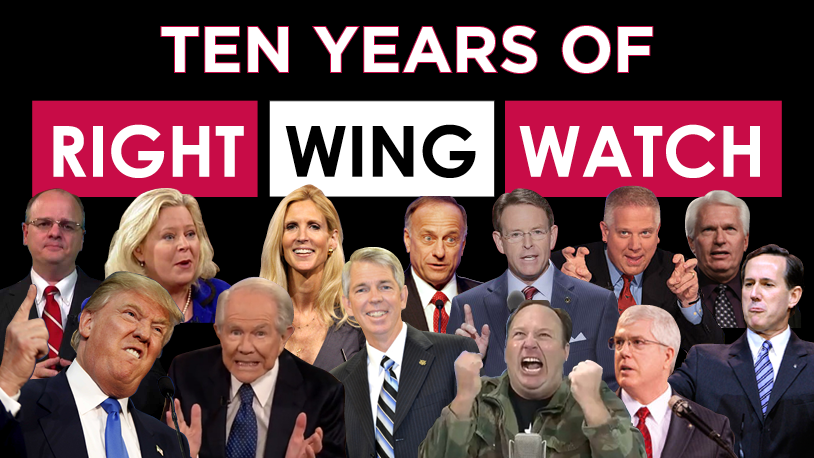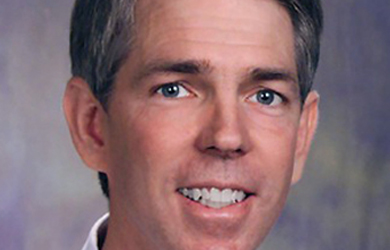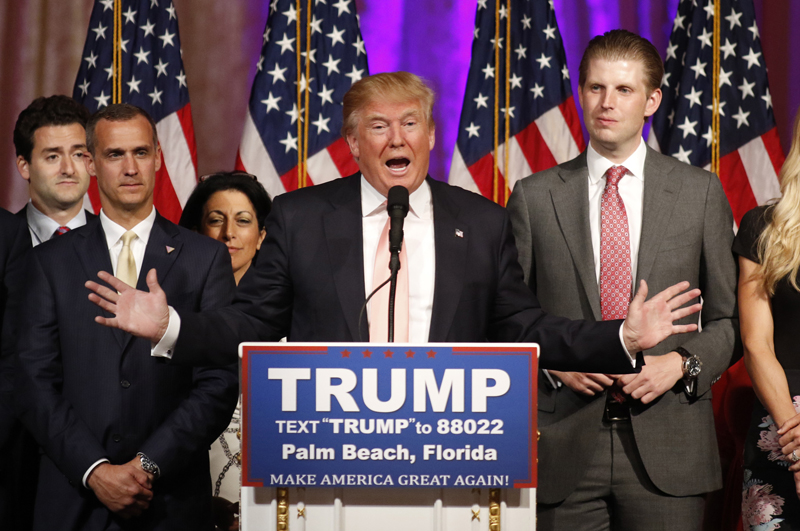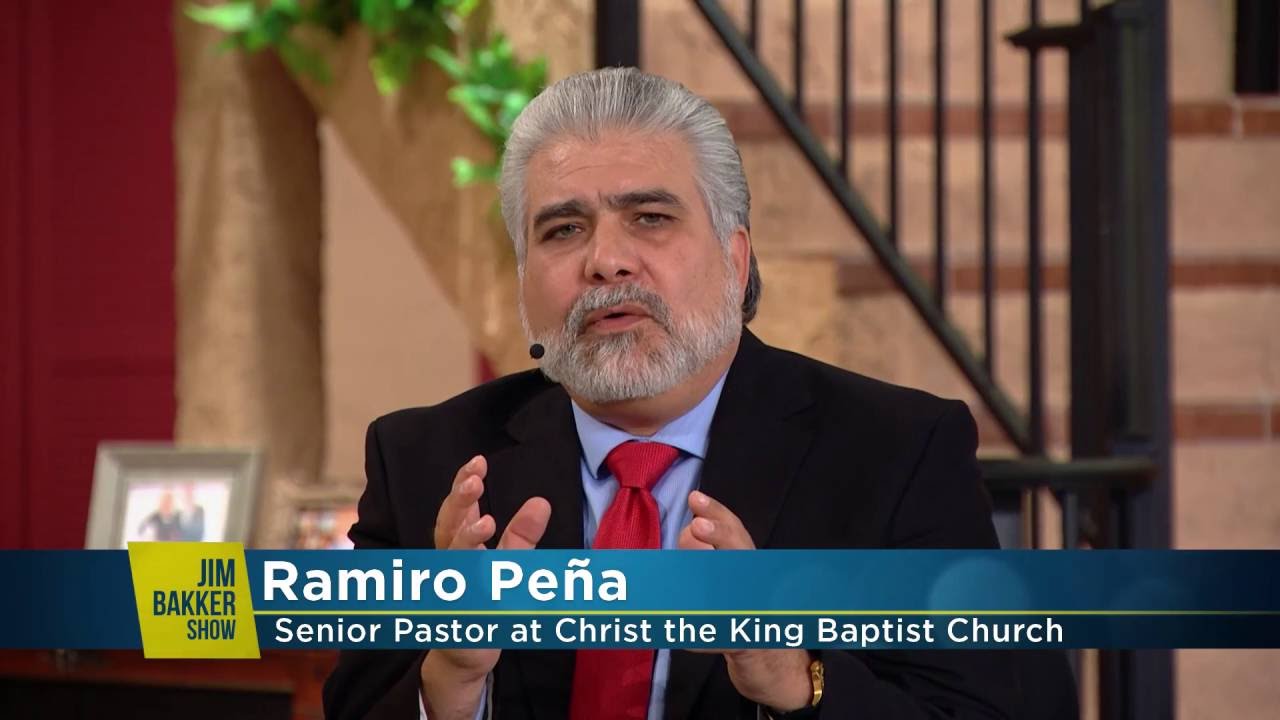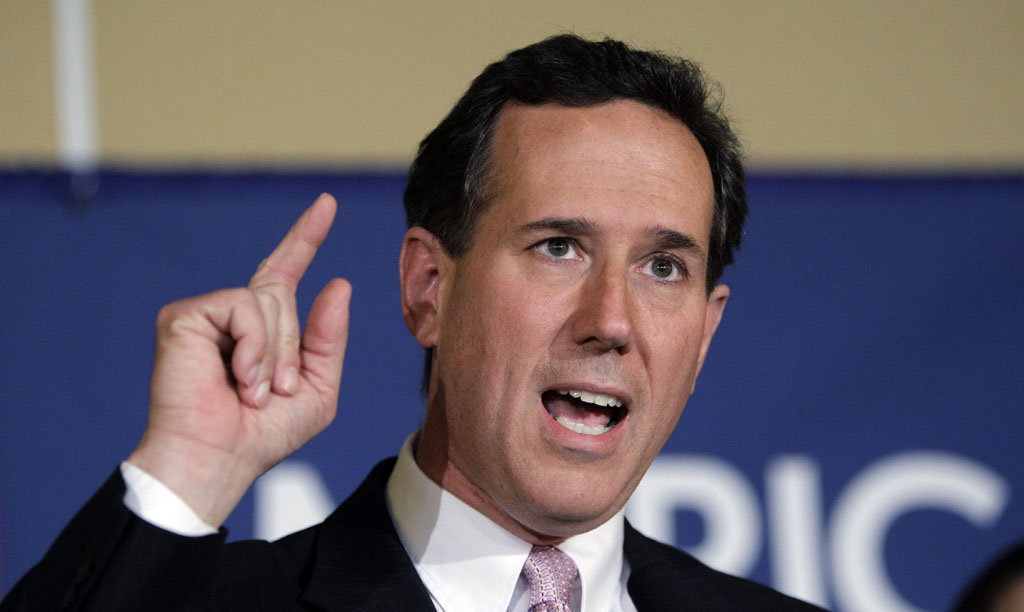People For the American Way launched its Right Wing Watch blog a decade ago, taking advantage of the internet’s growth to change the way we disseminate our monitoring, research and analysis of the Religious Right and related political movements. It has never been boring!
The year Right Wing Watch launched, 2006, was the year of the first Values Voter Summit, the largest national political gathering for Religious Right activists, which is organized by the Family Research Council and its allies. The Values Voter Summit took over from the Christian Coalition’s Road To Victory conference after that group’s financial and organizational implosion. (Just to confuse things, Ralph Reed’s Faith and Freedom Coalition now runs its own national gathering in D.C., which it calls the Road to Majority.)
Glancing through Right Wing Watch posts from that first year brings a sense of reverse déjà vu. Among the strangely familiar topics you’ll find: conspiracy theories about George Soros and gay donors brainwashing America’s youth; a televangelist urging Christian parents to withdraw their children from public schools; rumors that “sex with infants” was the latest “trend” among gay people; the Family Research Council warning against “fetus farming”; senators finding time to pass a resolution affirming “In God We Trust” as the national motto; right-wing leaders urging Congress to strip federal courts of the ability to make decisions about marriage; and others threatening to support challengers to any senator who supported immigration reform legislation.
There was even a report that Religious Right leaders were feeling skeptical about potential 2008 Republican presidential candidates like John McCain and were looking to coalesce around a favored nominee, in that case then-Sen. Sam Brownback of Kansas. He didn’t do as well as this year’s Religious Right favorite, Texas Sen. Ted Cruz.
One of the major factors shaping the Right Wing in America over the past decade was the election of Barack Obama in 2008 and his re-election in 2012. Obama’s election spurred right-wing leaders to declare themselves part of a “resistance” movement as congressional Republicans vowed to resist and obstruct him at all costs to deny him a successful presidency.
During the Obama years, new organizations and coalitions formed to marshal that resistance. Among them were the Freedom Federation, which brings what we might think of as the traditional Religious Right together with dominionist Pentecostal groups and leaders, all joined in partnership with the Koch brothers’ Americans for Prosperity. AFP’s involvement explains why opposition to progressive taxation joined the expected social conservative issues in the group’s declaration of American values. The same David Barton who has taught the right wing to embrace his Christian-nation interpretation of American history and the Constitution also preaches that the Bible opposes the minimum wage, progressive taxes, estate taxes, and collective bargaining.
During the Obama years, the Religious Right showed a willingness to embrace what had previously been more fringe dominionist groups, the way the Republican Party has embraced Christian nationalists like David Lane—and the way the Trump campaign tolerates, if not openly embraces, the white nationalists who have been energized by his campaign’s attacks on minorities, immigrants and “political correctness.” Secretive strategy-sharing groups like the Coalition for National Policy have welcomed into their membership people like Michael Peroutka, a neo-confederate whose Christian Reconstructionist view of government leads him to believe government has no authority to house, feed, clothe, educate or provide health care to anyone. Peroutka, who ran for the presidency in 2004 on the Constitution Party ticket, is now an elected Republican member of the Anne Arundel County Council in Maryland.
In addition, U.S. Religious Right groups increasingly see themselves as part of a global culture war effort, establishing outposts in Latin America, Africa, Europe and the former Soviet Union, as well as in the United Nations and other international agencies, from which they work to oppose advances in LGBT equality and legal access to abortion. In this work, Religious Right leaders routinely team up with the world’s most repressive regimes, ignoring the countries’ hostility to religious freedom and other democratic values in order to work with them to make human rights protections subordinate to “traditional” cultural and religious views on gender and sexuality.
In spite of repeated proclamations of the Religious Right’s demise into political irrelevance, Donald Trump and his running mate Mike Pence made history this year as the first presidential ticket to address the Values Voter Summit as presidential and vice-presidential nominees. Normally nominees would take a pass during the general election, when they would be focused on reaching voters in the middle. But Trump’s campaign is relying heavily on generating enthusiasm and turnout among conservative white evangelicals who still make up an important part of the GOP base. That’s why he has promised them Supreme Court justices in the mold of Antonin Scalia and pledged to increase their political influence by eliminating restrictions on politicking by churches. For Religious Right leaders who fear they are being left behind in a changing America, Trump’s ardent courtship has been exhilarating.
Ten years ago, Religious Right leaders had reason to be hopeful about the culture wars. In 2004, voters approved 11 initiatives on state ballots to ban same-sex couples from marrying, initiatives that Republican operatives had engineered to drive up conservative evangelical voter turnout and help win George W. Bush’s re-election.
In 2005, Bush repaid religious conservatives’ efforts when he nominated Chief Justice John Roberts and Justice Samuel Alito to the Supreme Court. The Roberts Court has been a source of right-wing victories on many fronts, but has been a source of deep frustration and anger on one of the Religious Right’s key issues: resisting the advance of LGBT equality.
In 2006, marriage equality was supported by just 35 percent of Americans, with 55 percent opposed. But by 2016, those numbers had flipped, with 55 percent supporting marriage equality and 37 percent opposed. (These figures are from Pew; others show even higher current support for marriage equality.) It wasn’t until 2012, after more than 30 losses, that LGBT equality advocates started winning marriage questions on the ballot. And just three years later, the U.S. Supreme Court made marriage equality the law of the land nationwide.
That public shift on LGBT issues and the Supreme Court’s marriage equality ruling are among the reasons that Religious Right leaders today sound less triumphant than a decade ago. Instead, they portray themselves as a persecuted minority, part of a righteous remnant that must stay true to the faith in the face of what is sure to be increased religious persecution from a hostile secular left. It’s true that this persecution complex has been part of the Religious Right’s rhetorical arsenal for decades, but it is reaching new heights with the possibility of a President Hillary Clinton being responsible for filling vacancies on the federal courts. The almost universal willingness of Religious Right leaders to rally around a candidate as flawed as Trump is a sign of the desperation they feel when they imagine a Supreme Court that is no longer dominated by conservative justices. And it fuels their calls for conservative officeholders to nullify the Court’s decision through defiance and civil disobedience.
The sense of losing control of the country—evident both in the Right’s reaction to the election of Barack Obama and the intensity of Trump’s supporters—is examined in “The End of White Christian America,” a 2016 book by political scientist and pollster Robert Jones, who explores the decreasing cultural dominance of a group that was long considered the default standard of American culture and politics. While white Christians made up 54 percent of the public in 2008, they make up only 43 percent in 2016. This demographic change reflects both immigration and the significant growth of the “nones.” People who claim no religious affiliation were 16 percent of the population in 2006 but now make up about one-quarter of the U.S. population and almost 40 percent of young adults.
The growth of the religiously unaffiliated hasn’t been felt strongly at the voting booth because their voter participation has not matched their rapid growth, but it is viewed by Religious Right leaders as a dire sign of an increasingly secular culture, one that they believe will be unrelentingly hostile to traditional religious believers. It is why so many of them believe America will only be redeemed through a spiritual Great Awakening, something they hope eliminating the Johnson Amendment, which prohibits outright politicking by tax-exempt organizations including churches, will help to spark.
But the story of the Right Wing in American politics over the past decade is not simply one of decline. In fact, one of the biggest and most significant changes in American politics has been the increasing Republican domination at the state level. In 2006, Democrats controlled both legislative chambers in 27 states and the Republicans in 14, with other states having divided control. But 10 years later, Democrats control both legislatures in only 11 states, with Republicans in control in 30. An opaque and massively funded network of right-wing political organizations and think tanks has mobilized to swing state governments dramatically to the right, a political shift that has led to dramatically weakened support for public schools and higher education, increased attacks on unions, and a wave of restrictions on reproductive health care.
The Supreme Court’s 2007 decision in Gonzales v. Carhart made it clear that, while a majority of the justices were not willing to overturn Roe v. Wade altogether, they would allow states to impose severe restrictions on women’s access to abortion. At an Evangelicals for Life gathering last year, anti-choice leader Charmaine Yoest celebrated the “tidal wave” of abortion restrictions, which she said came from a strategic decision to focus on state legislatures and create opportunities for the Supreme Court to chip away at Roe, what she called an “under-the-radar” way to on the offensive. Of course, the continued success of this strategy presumes a Supreme Court that is willing to go along.





